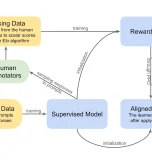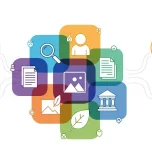Online deception isn’t a niche issue anymore. It’s everywhere. Scammers fake identities, clone images, and manipulate the media to mislead people. And they’ve become incredibly good at it.
Most ordinary internet users can’t tell a fake image from a real one. That’s where reverse image detection tools, powered by smart tech, step in. They do something simple but powerful. They check where an image has appeared online before. If someone is using a stolen photo, a deepfake, or a fake brand image, it brings that history to the surface. For everyday users, it’s like having a digital lie detector in their pockets.
Here, we will explore how reverse image detection can help users in fighting digital fraud. Before that, let’s learn about something very important!
What is Digital Fraud?
Digital fraud involves deceptive acts carried out using digital tools and platforms. These tricks are often hidden behind fake identities, misleading visuals, or tampered documents. They aim to steal information, gain money, or manipulate trust.
Types of Digital Fraud
- Identity Theft: Fraudsters use someone else’s photos, personal data, or credentials to impersonate them.
- Catfishing and Romance Scams: People build fake online personas using stolen photos to emotionally or financially exploit others.
- Counterfeit Products: Fake images of branded items lure users into buying cheap or low-quality knockoffs.
- Deepfake Videos and Edited Media: Manipulated content is used to spread false narratives or target individuals unfairly.
- Online Financial Scams: Fraudulent investment offers or donation requests, often backed by stolen visuals, trick people into sending money.
How Reverse Image Detection Helps in Fighting Digital Fraud?
Detecting Fake Profiles and Catfishing
Catfishing is quite common these days. Scammers create fake social media profiles using others’ pictures and data and add their friends and family members. After that, they ask for money or data to commit crimes. To avoid being caught, they generally create a sense of emergency and don’t let them think. Many people have lost their money through this scam.
However, detecting fake profiles or catfishing scams isn’t much harder. With the help of AI-powered reverse image tools, anyone can quickly check if a profile is genuine or not. For that, they just need to download the profile picture and search by image.
The image search tool will immediately show all the profiles or pages where the same photo is posted. If one face is linked to multiple names or locations, that’s a red flag.
Combating Counterfeit Products
Fake online stores often use stolen product images to trick buyers. You think you are getting official goods, but you are being sent fakes. Even sometimes, the product never arrives.
With reverse image detection, online buyers can quickly spot if the product photo is genuine or stolen from another brand. That’s how they can make informed and right buying decisions. Similarly, this technology is a game-changer for brands, helping them maintain trust, protect their trademarks, and prevent fraud at the source.
Exposing Deepfakes and Manipulated Media
Not all videos and pictures we see online are real. Some are so convincingly created using advanced techniques and AI image generation tools that they look like authentic news photos, celebrity pictures, or personal snapshots. Deepfakes are getting harder to detect with the naked eye.
Reverse image detection can help by analyzing keyframes from these videos. If a particular face or scene doesn’t match its supposed source, users can find the original media. It offers real-life benefits to users, including;
- Prevents false accusations
- Protects individuals from reputational harm
- Helps people separate truth from lies
This is especially useful during election seasons or viral controversies.
Preventing Identity Theft and Financial Fraud
Scammers sometimes pretend to be real people to trick others and steal money. They might use your photo to make a fake ID or pretend to be you on social media to ask for money or spread lies.
Reverse image search tools can help you monitor where your photos are being used online. If your image shows up in places you don’t recognize, you’ll be able to spot it early and take action before things get worse.
This helps you stop people from pretending to be you and keeps your online identity safe. Many parents also use this to check if their children’s pictures are being misused. It’s a simple way to add extra safety to your online life.
Verifying Information
We all see unbelievable photos on social media every day. It could be a celebrity in a strange place, a wild animal in a city, or a politician doing something shocking. But often, these pictures are fake, edited, or taken from a different event. Sometimes, the story behind the image is completely made up.
Want to know the truth behind those photos? Reverse image search can help. It lets you check where a photo really came from and when it was first shared. If someone is using an old or fake image to cause panic, you can catch it immediately.
That’s how reverse image search can help:
- Stop fake news
- Prevent public fear
- Encourage smart and careful sharing
Conclusion
The internet isn’t as honest as it looks. Images can lie, profiles can trick you, and videos can be staged. That’s the harsh truth of digital fraud. But regular users don’t have to stay powerless.
Reverse image detection empowers everyday people to fight back. It helps you verify identities, protect money, guard your reputation, and confidently share content.






